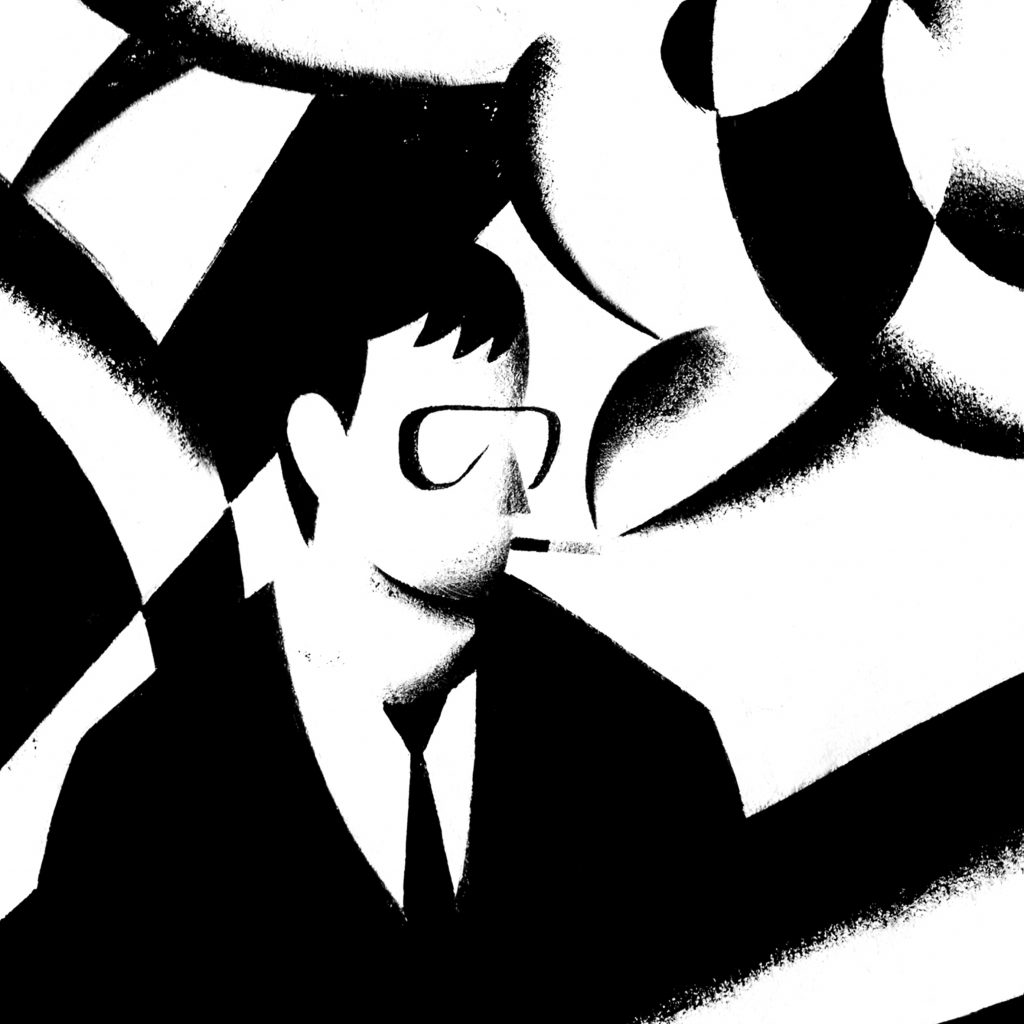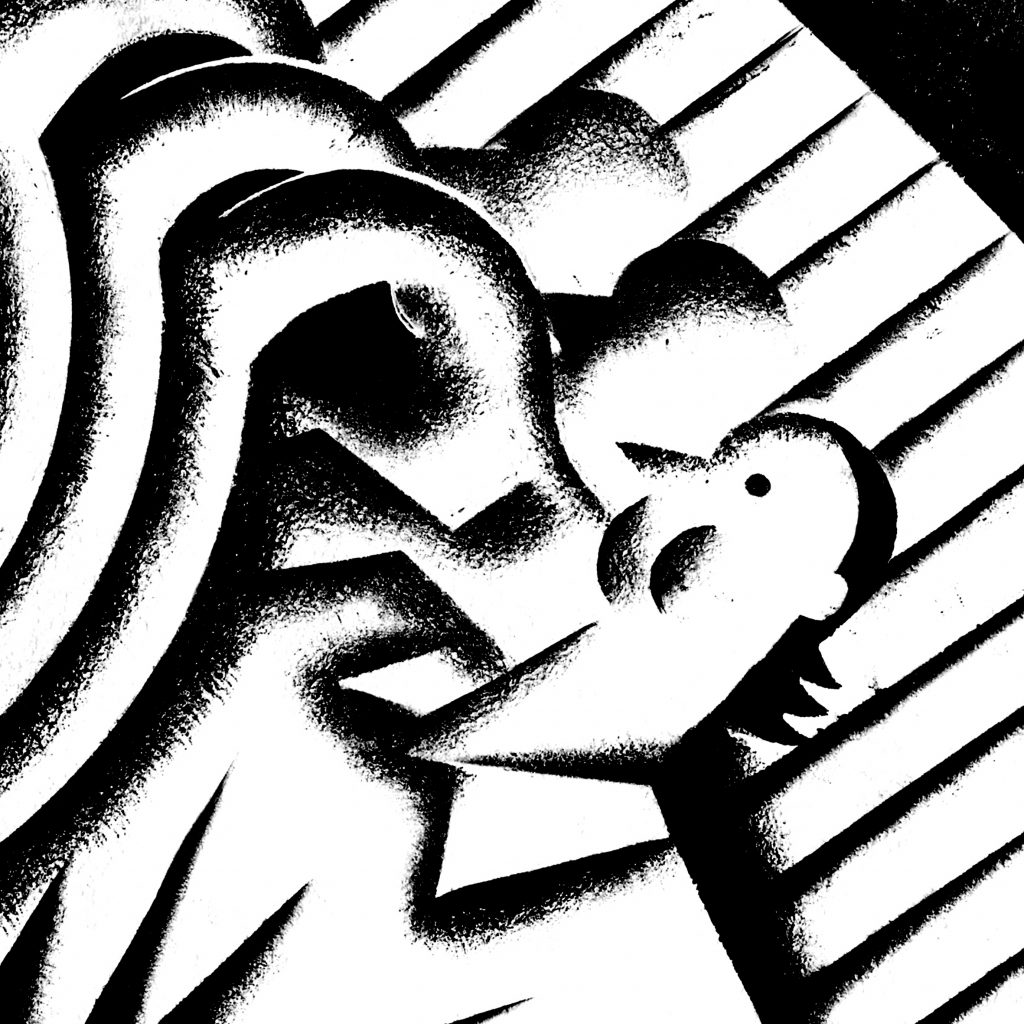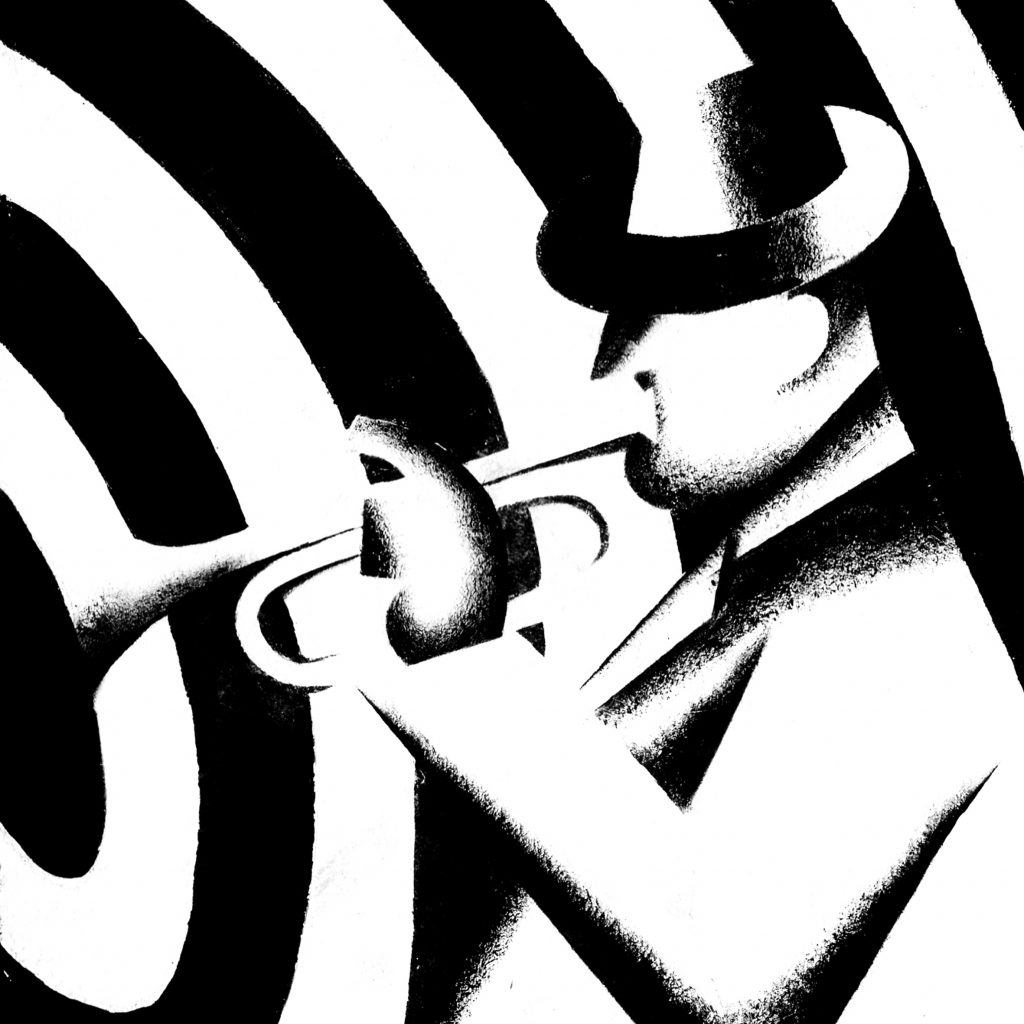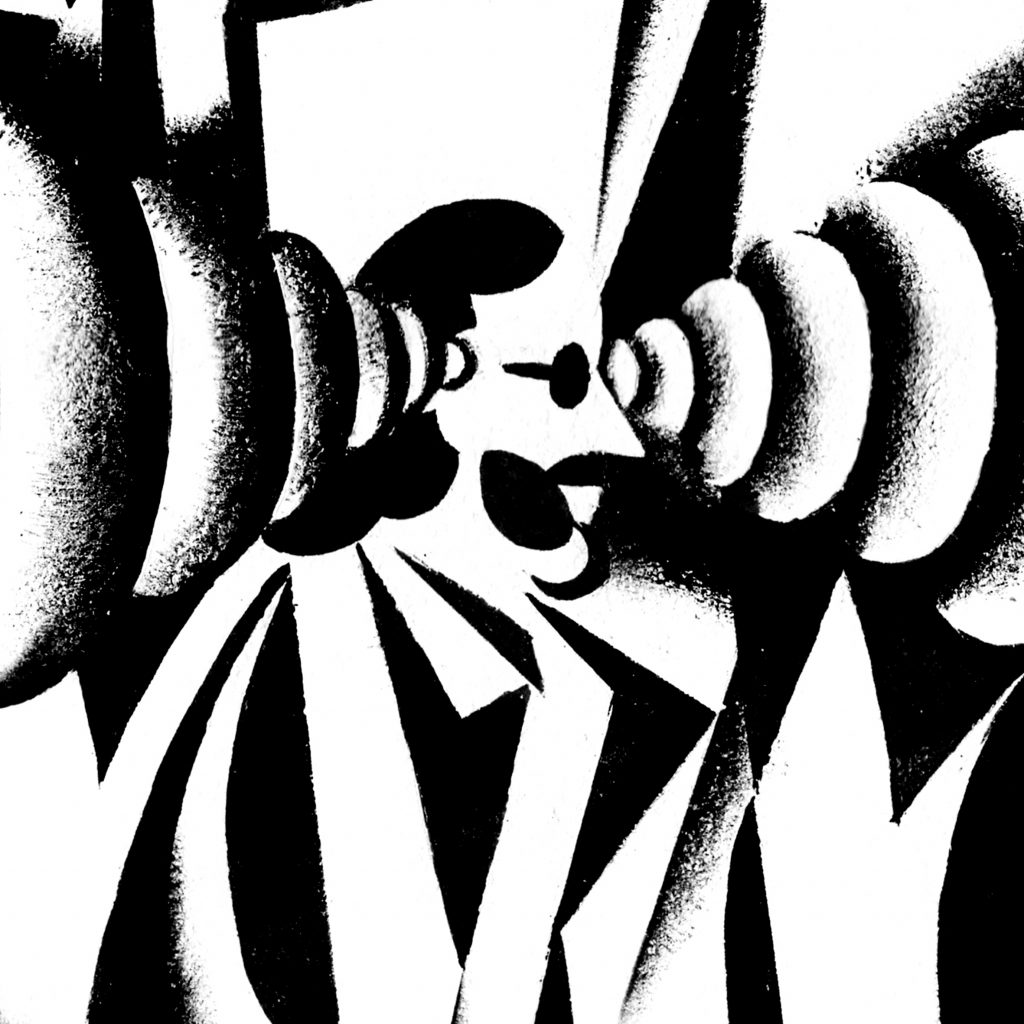
KRZYSZTOF KOMEDA 1931 – 1969
ROSEMARY’S LULLABY 1968
2 minutes 22 seconds
„I have a talent for composing soundtracks. I can sense the image and what I’m doing somehow works out well. The film suggests a kind of music and its use.“
Rosemary’s Lullaby is the main motif of the soundtrack to Roman Polański’s horror film Rosemary’s Baby. The lullaby appears several times throughout the film, each time in a more and more disturbing version, signalling the hellish end. Rosemary’s Baby was the first film that Polański made in Hollywood. The young director insisted on Krzysztof Komeda composing the music. The two artists were good friends since Komeda composed a soundtrack to Two Men and a Wardrobe, Polański’s short made during his studies.
His real name was Krzysztof Trzciński. Komeda was his childhood nickname that he got after misspelling the word KOMENDA (as in command post) on a door during children’s war play. As a child, Komeda suffered from polio, a disease that left him with a limp. He started piano lessons early at the age of four. When he was eight, Komeda was accepted to the music school in Poznań as the youngest student in history. After the war, he graduated from medical school. Yet, he soon gave up his medical practice in favour of music, his real passion. Komeda was exceptionally hardworking. He used to start working at the break of dawn and didn’t stop until he finished. Sometimes it meant working several days long without a break. He came to the USA at the age of 37, at the peak of his career, which was abruptly ended by a tragic accident. After one of their drinking parties, Komeda went for a walk with his friend Marek Hłasko. Most probably, the writer accidentally pushed him off an escarpment. Komeda fell down hitting his head, which led to a haematoma of the brain. The composer was in a coma for several months before dying in a hospital in Warsaw.
The lullaby is most probably the only popular music piece by a Polish composer to gain such a wide international acclaim. The tune has been covered by many musicians. Krzysztof Komeda composed soundtracks to the total of 68 films. He did not record many albums. The most famous one, Astigmatic, is considered one of the best records in the history of European jazz.
Illustrated by IGOR KUBIK

MICHAŁ URBANIAK 1943
FUSION III 1975
music album (10 pieces, 49 minutes)
„As I once left the violin for the saxophone, I have now started cheating the saxophone with the violin. America (…) has not been fond of the violin but I realized that I would have to conquer it with help of nothing else but this instrument.“
In 1973 Michał Urbaniak fulfilled his dream and left for the USA, where, over the next few years, he released several albums that won him wide acclaim. Even though the albums were recorded with the participation of various musicians, all of them retain the then highly popular fusion between jazz, rock, and funk that the Polish musician mastered.
Fusion III, the first outcome of the musician’s cooperation with American artists, was awarded the highest accolades from the critics who hailed it as Urbaniak’s best record of that time. Till this day the album fascinates the listeners with an energizing mix of heavy funk rhythms, edgy “folk” sounds of the leader’s electric violin, and incredible vocals from Urszula Dudziak.
The most American of all Polish jazz musicians, Urbaniak received formal training in classical music. It was jazz and New York, however, that were his dreams since his early childhood years. For this reason, he learned how to play the saxophone and quickly made a name for himself on the Polish jazz scene. Soon he joined the renowned group of Andrzej Trzaskowski with whom he went on his first tour to the USA. In time Urbaniak set up his own band, in which his music and life partner, Urszula Dudziak, played a major role. After a few years, the couple managed to win a stipend that allowed them to live in the birthplace of jazz. Encouraged by the big success brought by his first records recorded in the USA, Urbaniak settled down in New York. He has enjoyed great popularity with young American musicians. Many of the future big names including the bass player Marcus Miller would often make their debut in Urbaniak’s numerous projects. It was thanks to Miller’s recommendation that Urbaniak performed on Miles Davis’s famous album Tutu (1986), which made him the only Pole to cooperate with the legendary jazz musician.
Illustrated by IGOR KUBIK

TOMASZ STAŃKO 1942 – 2018
BALLADYNA 1976
music album (7 pieces, 40 minutes)
„(…) I’m attracted to what’s unsettling and anarchist. If I was born later, I would be a rock or hip-hop artist. Jazz was in opposition to the educational system, stability and bourgeoisie.“
The first album to be recorded by a Polish musician for the prestigious ECM record label. After its release, Tomasz Stańko cooperated with the label on many occasions and beginning with the 1990s he became one of its most prominent musicians. Balladyna was recorded in a quartet: two Polish and two foreign musicians. Interestingly enough, the band did not include a pianist. Such an unconventional solution at that time provided a distinct space, which in turn could be filled by the creative musicians. It is on this record that Stańko is said to have found his balanced, elegant and melancholic style of playing „nice tunes with dirty tones“, which he was most renowned for throughout his career.
Born in Rzeszów, Stańko was always very fond of Kraków, were he graduated from music school and started his career as a jazz musician. Early on he was attracted to the more radical and avant-garde sounds. Before long the musician started playing with the most accomplished jazz players on the Polish music scene, including Krzysztof Komeda, whose band he joined being recommended by Michał Urbaniak. In the late 1960s Stańko started his own jazz band Tomasz Stańko Quintet. The three albums recorded by the group are considered among the most original productions in the history of European jazz. The Quintet was admired for bringing together modern, avant-garde solutions and mysterious, trance-like atmosphere of the Slavic tunes. They made a name for themselves for moving freely between total improvisation and highly disciplined performance.
When the Quintet disbanded, Stańko was an accomplished jazz musician of international fame. He enjoyed experimenting with other music genres, though. Stańko performed with rock bands, participated in Krzysztof Penderecki’s jazz experiments, and composed soundtracks. One of his unconventional compositions is the trumpet solo illegally recorded in the world-famous temple of Taj Mahal. And yet, the stylistics achieved in Balladyna proved to be the closest to the artist’s heart and as such dominated the albums recorded in the last quarter of the century.
Illustrated by IGOR KUBIK

ZBIGNIEW SEIFERT 1946 – 1979
MAN OF THE LIGHT 1977
music album (8 pieces, 42 minutes)
„All my dreams and desires are in this album. I am absolutely proud of it.“
The year of 1976 was a ground-breaking one for Zbigniew Seifert. The artist was finally able to record his own albums and a long-awaited opportunity to visit the USA opened up.
Man of the Light (1977) was the first album he recorded having complete artistic freedom as for the choice of repertoire as well as collaborators. Seifert made a name for himself not only as an outstanding performer but also a successful leader and interesting composer.
Having received a classical training in violin, the artist grew very fond of John Coltrane’s music as early as in his high school years, which propelled him to start his own jazz band. The musician caught the attention of Tomasz Stańko, who invited Seifert to join his project. Being a member of the famous trumpeter’s quartet, Seifert recorded three innovative records and went on a European tour. At the same time, the musician cooperated with the experimental Jazz Studio of the Polish Radio as a recording instrumentalist. After the breakup of Stańko’s band, Seifert lived and worked in Germany cooperating with local musicians and preparing for his solo career.
Although he played the electric violin, Seifert made everything possible to keep the instrument’s sound as natural as possible. Combining Coltrane’s style with impressive technique and classical music inspirations, the Polish artist developed a unique style that earned him a wide acclaim from the audiences and musicians alike. His first solo albums showed his incredible talent and launched an international career. Unfortunately, the disease ruined the artist’s plans. Following the release of Man of the Light, Seifert managed to record a few concerts and make an outstanding record, Passion (1979), with world-class jazz musicians in the USA. Siefert died in Buffalo at the age of 33.
Illustrated by IGOR KUBIK
